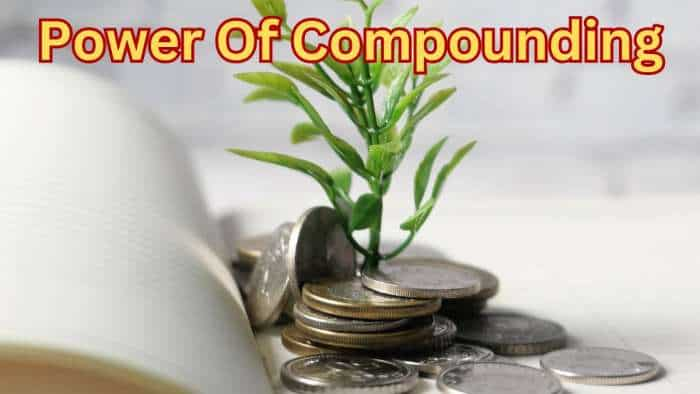U.S. labor costs increased steadily in the first quarter as a jump in transportation and manufacturing wages was offset by small gains elsewhere, pointing to moderate inflation pressures even as the labor market tightens.
Other data on Tuesday showed a rebound in consumer confidence this month amid growing labor market optimism. While house prices increased at their slowest pace since 2012 in February, slowing house price inflation is stimulating demand for homes.
The signs of the economy`s brightening prospects and benign price pressures came as Federal Reserve officials began a two-day policy meeting on Tuesday.
The U.S. central bank in March dropped its forecasts for any rate increases this year citing cross currents facing the economy, halting a three-year policy tightening campaign. The Fed raised borrowing costs four times in 2018.
Inflation has retreated further from the Fed`s 2 percent target, catching the attention of President Donald Trump who has urged the central bank to cut rates.
"Inflation really isn`t an issue right now, it looks like the outlook for growth is strengthening," said Chris Rupkey, chief economist at MUFG in New York. "At this stage, the Fed can stay on the sidelines and rate cuts at this juncture are premature."
The Employment Cost Index, the broadest measure of labor costs, rose 0.7 percent after advancing by the same margin in the fourth quarter, the Labor Department said. That lowered the year-on-year rate of increase in the ECI to 2.8 percent. Labor costs rose 2.9 percent in the fourth quarter, which was the largest gain since June 2008.
The first-quarter rise in the ECI was in line with economists` expectations. The ECI is widely viewed as one of the better measures of labor market slack. It is also considered a better predictor of core inflation.
The government reported on Monday that the personal consumption expenditures (PCE) price index excluding the volatile food and energy components increased 1.6 percent in the 12 months through March, the smallest increase since January 2018 and down from 1.7 percent in February. The so-called core PCE index is the Fed`s preferred inflation measure.
The dollar fell against a basket of currencies, while prices of U.S. Treasuries rose. Wall Street`s main stock indexes were trading lower after hitting record highs in the previous session.CONFIDENCE PERKS UP
In separate report on Tuesday, the Conference Board said its consumer confidence index rose to a reading of 129.2 this month from 124.2 in March. That jump strengthened the view that consumer spending will accelerate after growing at its slowest pace in a year in the first quarter.
"The Fed puts more store in consumer confidence as a predictor of consumer spending behavior, and from this perspective the Fed should be reassured that the second quarter looks strong on the consumer spending front," said John Ryding, chief economist at RDQ Economics in New York.
The survey`s so-called labor market differential, derived from data about respondents saying jobs are scarce or plentiful, jumped to 33.5 percent from 28.7 percent in March.
This measure closely correlates to the unemployment rate in the Labor Department`s employment report. The rise in labor market differential together with dwindling numbers of people on unemployment rolls raises the possibility the jobless rate could drop in April from its current level of 3.8 percent. The government will publish its April employment report on Friday.
But consumers` inflation expectations fell this month. With the labor market continuing to tighten, there is optimism wage growth will pick up a notch this year. There is growing anecdotal evidence of companies struggling to find workers.
In the first quarter, wages and salaries, which account for 70 percent of employment costs, increased 0.7 percent after rising 0.6 percent in the prior period. Wages and salaries were up 2.9 percent in the 12 months through March. That followed a 3.1 percent gain in the year through December.
There were strong wage gains in the manufacturing, construction and transportation industries, but compensation slowed in the professional and business services, education and health services sectors as well as in the leisure and hospitality industry.
A third report on Tuesday showed the S&P CoreLogic Case-Shiller composite home price index of 20 U.S. metropolitan areas rose 3.0 percent in February from a year ago. That was the smallest gain since September 2012 and followed a 3.5 percent increase in January.
Growth in house prices has slowed from as high as 6.8 percent in March 2018. The moderation in prices followed an ebb in demand after mortgage rates spiked last year. Mortgage rates have since declined. That, together with lower prices, is helping stimulate demand for homes, though supply remains tight.
A fourth report from the National Association of Realtors showed contracts to buy previously owned homes rebounded 3.8 percent to an eight-month high in March after dropping 1.0 percent in February.
"As long as mortgage rates remain near current levels, sales activity should trend higher this year, although low inventory levels will likely cap housing sector expansion to some degree," said Ben Ayers, senior economist at Nationwide in Columbus, Ohio.
(This article has not been edited by Zeebiz editorial team and is auto-generated from an agency feed.)
Get Latest Business News, Stock Market Updates and Videos; Check your tax outgo through Income Tax Calculator and save money through our Personal Finance coverage. Check Business Breaking News Live on Zee Business Twitter and Facebook. Subscribe on YouTube.
RECOMMENDED STORIES

Mukhyamantri Majhi Ladki Bahin Yojana: Know eligibility, benefits, and documents to apply for this women-centric government scheme

Gratuity Calculator: Rs 37,000 as last-drawn salary; 6 years and 3 months as service period; know your gratuity?

Top 7 Gold ETFs With Highest Annualised Returns in 10 Years: Know how Rs 10 lakh investment in each ETF has performed in last decade

Defence PSU Stock to BUY: This multibagger scrip corrects 49% from 52-week high - Is this right time to buy?

Top 7 Large and Mid Cap Mutual Funds With up to 43% Return in 1 Year: Rs 25,000 monthly SIP investment in No. 1 scheme is now worth Rs 3,64,654

Power of Compounding: Can monthly SIP investment of Rs 7,000 help build corpus of Rs 4.5 crore? See in how many years it can be done
10:29 PM IST












 India's GDP growth to pick up in third quarter compared to first half of FY25: ICRA report
India's GDP growth to pick up in third quarter compared to first half of FY25: ICRA report GST collection grows 9% to Rs 1.87 lakh crore in October
GST collection grows 9% to Rs 1.87 lakh crore in October IMF says India's GDP growth to moderate to 7% in 2024 and 6.5% in 2025
IMF says India's GDP growth to moderate to 7% in 2024 and 6.5% in 2025  India poised to be third largest global economy by 2030, rising population presents challenges: S&P
India poised to be third largest global economy by 2030, rising population presents challenges: S&P  Global fund investments in India will accelerate in future: Analysts
Global fund investments in India will accelerate in future: Analysts